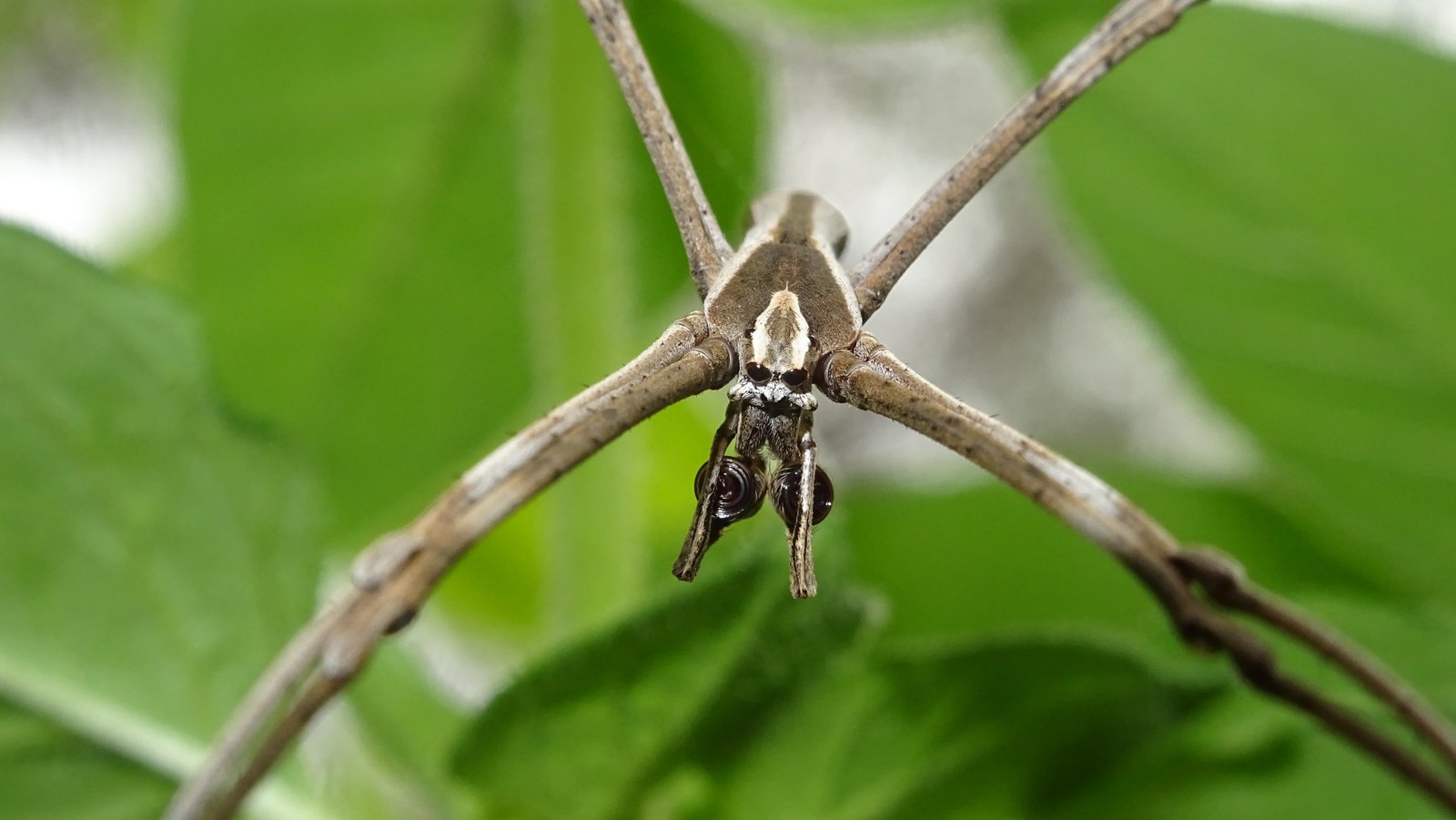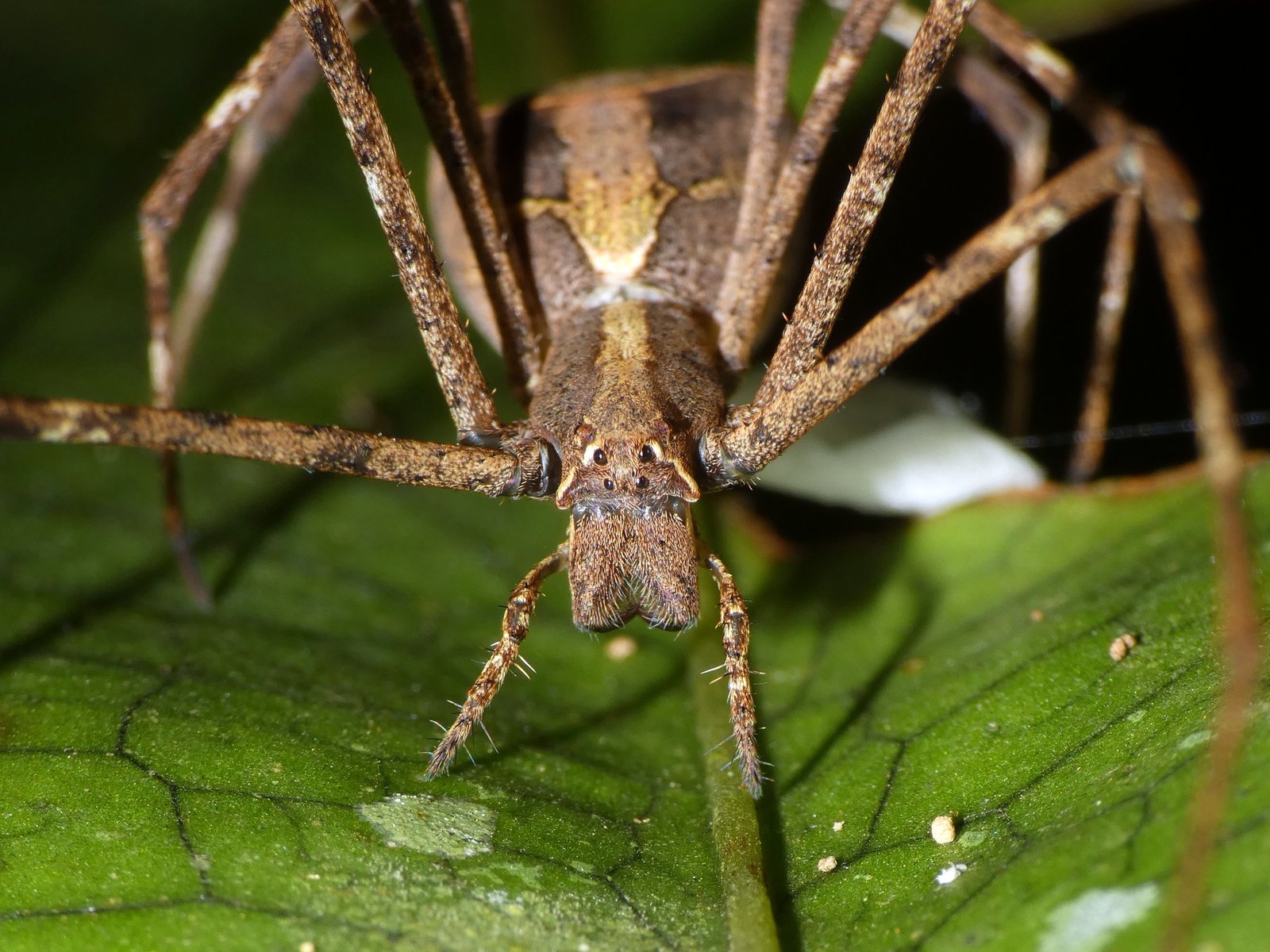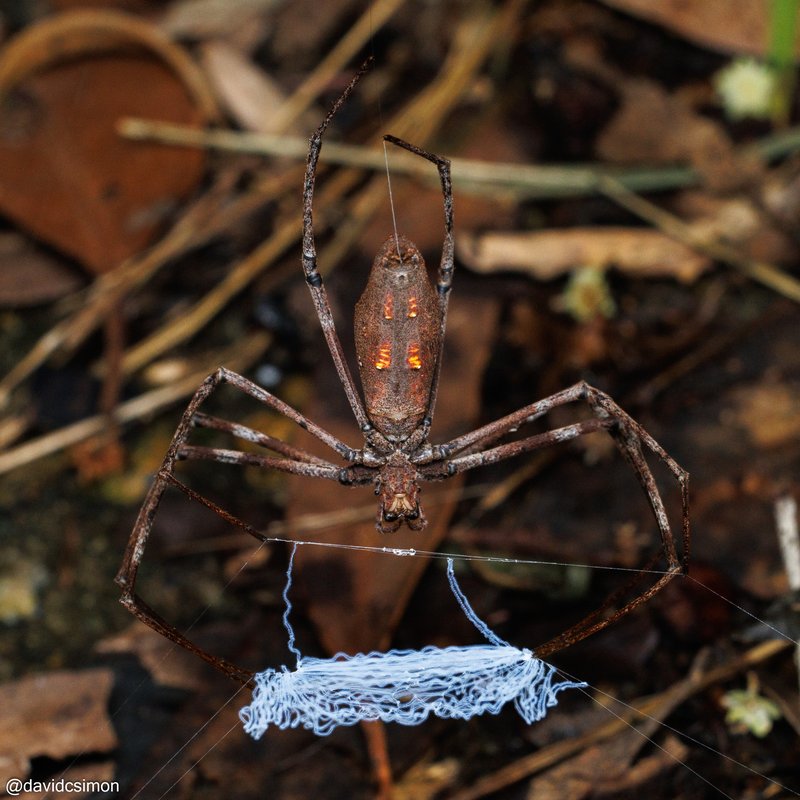Net-casting Spiders
Ogre-faced Spiders
Introduction
Net-casting Spiders have a unique way of catching their prey. They make a small web in the form of a net held by the front legs that can be stretched out wide to envelop an unwary insect passing by.
What do Net-casting Spiders look like?
Identification
The genus commonly encountered in gardens is Asianopis and these spiders have excellent eyesight, with large forward facing eyes that help them to see at night. Another genus, Menneus, has less prominent eyes.

Asianopis subrufa, male
Image: Helen Smith© Australian Museum
Net-casting Spiders have stick-like bodies, with spindly legs. Members of the genus Asianopis have a large, prominent pair of eyes at the front of the head (hence their other common name of Ogre-faced Spiders) and vary in colouring from fawn to pinkish brown or chocolate brown. Members of the genus Menneus have smaller eyes and have subtle greenish brown to grey patterning. The males are smaller and even more slender and stick-like than the females, and can differ from them in their colour and patterning.

Rufous Net-Casting Spider, Asianopis subrufa. Net-casting Spiders have a unique way of catching their prey. They make a small web in the form of a net held by the front legs that can be stretched out wide to envelop an unwary insect passing by.
Image: Greg Tasney© CC BY-SA 4.0
Where do Net-casting Spiders live?
Habitat
They are often seen on fine summer nights among garden shrubs and trees.
Distribution
Net-casting Spiders are widely distributed in forest habitats of south-eastern Australia.
What do Net-casting Spiders eat and how have they adapted?
Feeding and diet
They are primarily nocturnal, feeding on ants, beetles, crickets and other spiders.
Other behaviours and adaptations
When at rest, the spider hangs from vegetation with its head downwards, its long body and long, thin front and back legs held together on each side, giving the spider a stick-like appearance. The spider also assumes a head-down position when it is waiting for prey, except that it now holds its net with the front four legs and suspends itself by the back legs and spinnerets from support lines to surrounding foliage. The net is a blueish-white square of wool-like cribellate silk, whose coiled lines are designed to stretch and entangle prey. In order to have an aiming point, the spider often drops splashes of white faecal droppings onto the leaf or bark substrate over which it is poised. When an insect walks across this 'target', the spider plunges its net downward to envelop and entangle it. If successful, the spider silk-wraps the prey item, bites and paralyses it, and then feeds on it. Net strikes will also be made at flying insects that stray too close. An unused net is sometimes stored by hanging it on nearby leaves for the next night's hunting, or the spider may eat it.

© CC BY 4.0
What is the life cycle of Net-casting Spiders?
Life history cycle
After mating has taken place the female Net-casting Spider constructs strong spherical brown flecked egg sacs. Each sac is suspended among low foliage, either dead or living, by a short silk stalk and is further disguised using leaf debris.
Net-casting Spiders mature in summer, when mating and egg-laying occurs.
Are Net-casting Spiders dangerous to humans?
Danger to humans
These spiders are not considered to be dangerous.

© Australian Museum
References
- Framenau, V.W., B.C. Baehr and P. Zborowski. 2014. A guide to the spiders of Australia. New Holland Publishers.
- York Main, B. 1976. Spiders. William Collins Publishers Pty Ltd, Sydney NSW.

